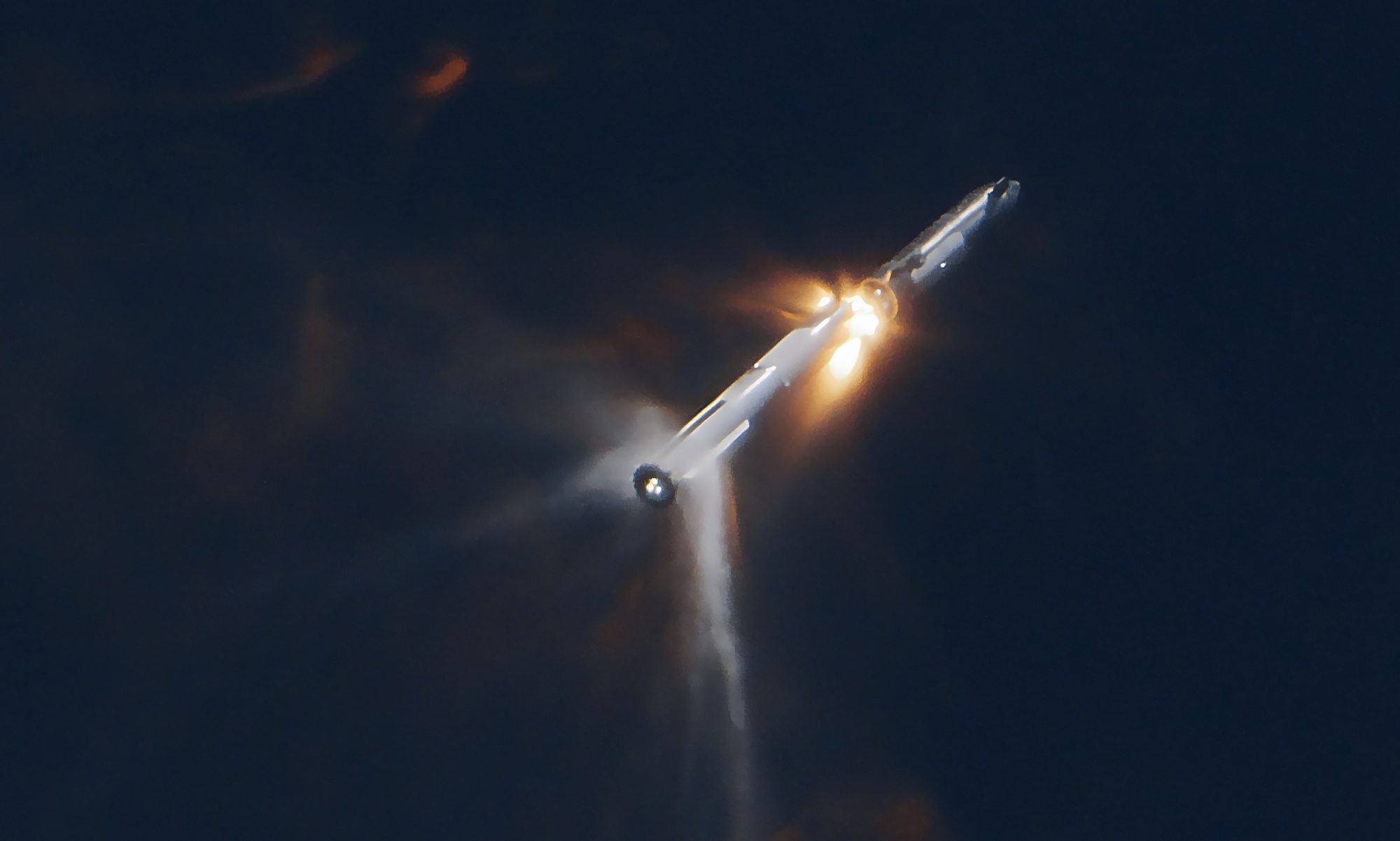SpaceX is often in the headlines, unfortunlatey its not always good news. On 18th November we saw the second of the Starship and SuperHeavy booster get off the launchpad successfully, it failed before reaching orbit. In a recent event, Elon Musk explained how a fuel venting near the end of the burn was responbie but entirely avoidable next time!
The Starship and SuperHeavy booster are an impressive combination. Standing at over 120 metres tall together they are one of the most powerful and versatile rocket systems ever built. It can produce 16,700,000 pound force of thrust making it twice as powerful as Saturn V that took the Apollo astrnauts to the Moon.

The first launch attempt failed when the rocket spun out of control, exploding about four minutes from liftoff. Following the disaster, the team identified that the flight termination system which was supposed to destroy the vehicle if it went out of control, failed to do its job.
Musk reported on the second launch test from an event at Boca China in Texas where he explained that the lack of a payload meant that it needed to vent some of the liquid oxygen propellant. It almost made it to orbit and would have succeeded if it had a payload. The liquid oxygen would have been consumed by the mighty Raptor engines instead of being vented which was as per design. Musk however did not elaborate on how this all led to a fire.

The third test flight is slated for February and Musk is confident it will reach orbit this time. On the assumption of a succesful launch they plan to test the de-orbit process, the payload door operations and transferring propellant from header tank to main tank. This latter test is part of the NASA Tipping Point program to test fuel transfer from one vehicle to another.
Whether its the third or even the fourth test launch that brings success for SpaceX their long term goals remain unchanged. They still hope to be able to carry up to 100 people on interplanetary missions and become a pivotal part of the return to the Moon.
Source : SpaceX, X feed.

